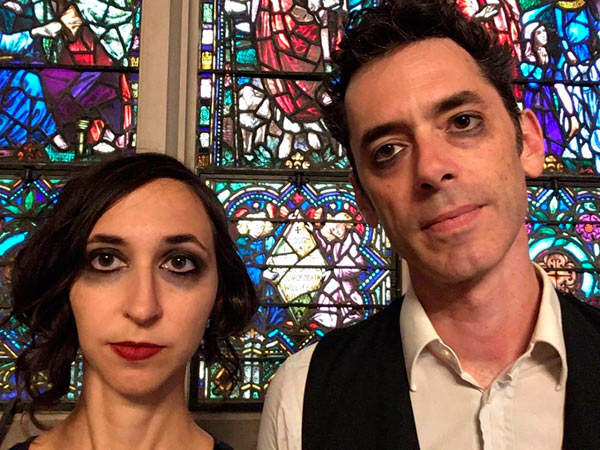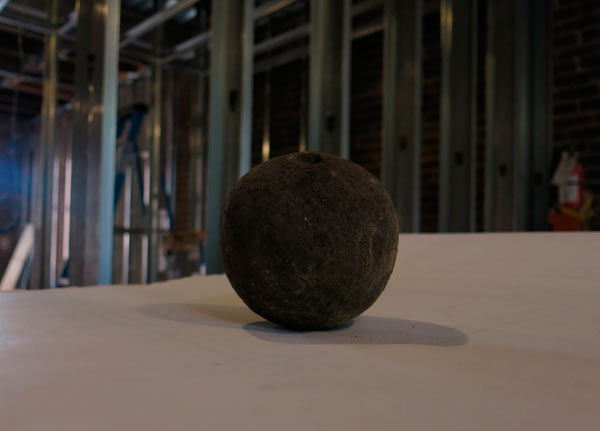Brooklyn battle buffs looking to probe the borough’s proud contributions to America’s founding can embark on a walking tour through Dumbo, Vinegar Hill Fort Greene, which takes today’s anti-redcoat warriors through an exploration of the prisoners who died in captivity on British ships off the coast of Kings County.
“When people learn about the American Revolution they obviously think of Boston, Philadelphia, Lexington and Concord — they really don’t think of New York City,” said urban archaeologist Alyssa Loorya, who will be leading the tour on May 8.
More than 11,500 Americans, known as the prison ship martyrs, died on the jail boats after the disastrous defeat during the 1776 Battle of Brooklyn, and the tour guide hopes to show New Yorkers the city’s pivotal role during the 18th-century rebellion for independence.
Following Gen. George Washington’s retreat to Manhattan during the conflict, the British moved thousands of prisoners to decommissioned ships dotting the New York Harbor, where they languished in squalid and overcrowded conditions — including on vessels docked in the Wallabout Bay at today’s Navy Yard, where mortality rates ranged from 60-to-70 percent, the history buff said.
“Other than the Civil War, we’ve never had American prisoners of war on American soil,” said Loorya. “It’s really a forgotten component of American history.”
Adding to the patriotic lore, the redcoats had offered the continental rebels their freedom, if they pledged loyalty to the King — but most remained true to their patriotic ideals, according to Loorya.
“Overwhelmingly, the patriots chose to stay in prison and suffer, rather than give up on this ideal that they so believed in — and that ideal was America and independence,” she said.
After the Revolutionary War, the thousands that died on the ships were hastily buried along Brooklyn’s shoreline, but in 1808, the politically-influential Tammany Society convinced a local property owner to gather the bodies in a tomb at what is now Hudson Avenue near York Street.
A fraction of these remains were moved in 22 boxes to a newly-created 25-by-11-foot brick vault in Fort Greene Park in 1873, where they remain to this day.
Toward the end of the 19th century, local activists, including the National Society Daughters of the American Revolution and the Society of Old Brooklynites, lobbied for a grand monument in the name of the prison ship martyrs.
Renowned Gilded Age architects Charles Follen McKim, William Rutherford Mead, and Stanford White designed a new entrance to the crypt in 1905, along with a wide granite stairway leading to the plaza atop the park’s hill with the famous 149-foot Doric column rising from its center, whose dedication was attended by President-elect William Howard Taft in 1908.
Loorya will start her tour at Jane’s Carousel — near where Washington escaped at the Fulton Ferry Landing to Manhattan — before continuing through Vinegar Hill, along the edge of the Navy Yard, and ending at the Prison Ship Martyrs Monument in Fort Greene Park.
The guide, who is a member of the Fort Greene chapter of the NSDAR and also works to preserve the historic Hendrick I. Lott House in Marine Park, will explore first-hand accounts from former prisoners, showing how their bravery inspired the newly-minted nation’s fight for independence.
“I think people don’t want to focus on the defeat. We were occupied and it’s much more exciting to talk about the battle and bravery as opposed to the loss,” so Loorya. “It plays an important role in understanding that fervor, that want for a free and independent America. The prisoners, their sacrifice is a staunch statement for that.”
Brooklyn Prison Ship Martyrs Walking Tour [Starts at Jane’s Carousel at New Dock Street near Water Street in Dumbo, www.ftgreenedar.org]. May 8 at 11 am. $10. Buy tickets here.























